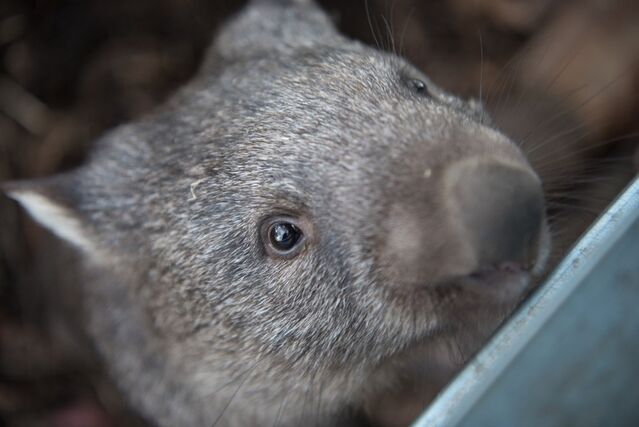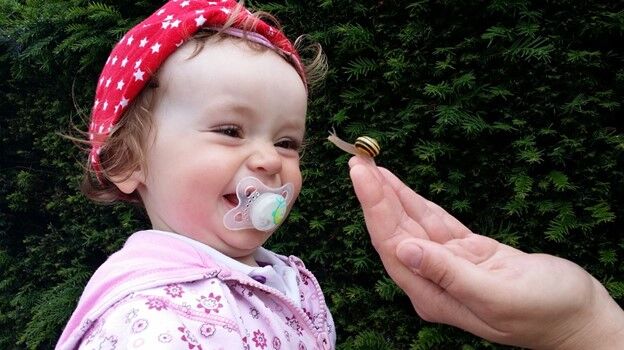Coronavirus Disease 2019
New Companion Animal Relations During COVID-19
Interspecies relations saved us during the isolation period.
Posted May 13, 2021 Reviewed by Jessica Schrader
Key points
- Social isolation during the pandemic has caused us to search out new forms of companionship.
- There is a potential for therapeutic benefit when interacting with any species of animal.
- Companion animals come in all species—not just cats and dogs.
- Animals help us interact with the natural world and with other humans.
Due to the worldwide pandemic, many people were stuck in quarantine—homebound and isolated. Of course, this has caused an increase in reported feelings of loneliness and despair while, simultaneously, many of our cognitive abilities have been tested. When I say that I write about "companion animals," most people automatically think of the most common species that interact with us—a dog, a cat, a rabbit, a bird, or a fish. After months of being stuck inside, with limited interactions with other humans, the coronavirus has actually provided us with a new opportunity to reconnect with nature and has opened the door to a wider variety of companion animals that can be enjoyed in our life.
Why Animals? Why Now?
As the father of animal-assisted therapy, Boris Levinson once suggested we all have something inside of us that relates to the animal kingdom (Levinson, 1972). It's something inside of us that helps us fill our needs and nurture us. Here during COVID-19 lockdown, from Foster Dogs Inc, a New York nonprofit, dog adoptions have risen 1000%. Is this causation due to our need to connect with others, and our basic human need for companionship?

Animal companionship is not new, historically it has taken a variety of forms but most often it is the way we interact with traditional companion animals in medical assistance or in mental support, as livestock guardians or in the military, or as represented in sporting activities. Despite our best efforts, a companion animal's cognitive skills may not always be respected in their ethological needs within our structure of nature and nurturing.
We need to understand the abilities animals have within the communications and emotional support of humans. Here the realization of the physiological ability to send and receive signals in the visual, auditory, tactile, electric, and chemical means is part of both the animal kingdom and the human social system.
Companion animals add to the communication between species and impact both our social and physical environment. This profoundly is communicative cognition and enhances our physiological, behavioral, and cognitive understanding and ability in companionship that help us fundamentally to achieve a higher mental status and welfare in our patience, understanding, parental skills, nurturing, and more (Hediger & Beetz, 2021).
Are the Benefits of Animal Companionship Only Coming From Cats and Dogs?
Let's look at the possibilities of animals surrounding us in our world. We interact with not just cats and dogs, but we may form a deep emotional bond with an animal of any species. For example, in Melbourne, Australia when a second COVID-19 lockdown was ordered in July, Emily Small found herself four new roommates: baby wombats. Small and her mother own the Goongerah Wombat Orphanage. This is a nonprofit organization for orphaned wombats. When the lockdown was announced, Small brought four wombats less than a year old to her apartment to salvage their efforts. She saw so much death during this period that in a statement from her, she emphasized that if it were not for these wombat's companionship during this isolation period, she would not be here.
This is a prime example that companion animals and communication between species create an impact both in the social and physical environments. This may be reflected in the various disciplines within human mental health. It is important to keep in mind that we are not confined to traditional companion animal species—it doesn't matter what the interspecies relationship may be. Humans may find a therapeutic benefit when interacting with any species of animals and the species that is most comforting to a particular person may be specific to that individual. (I certainly do not recommend taking a wild animal into your home. Please respect their species-specific needs!) The species of animal does not matter when considering the benefits of human-animal interactions. What matters most is the idea and the importance of mental health that these animals of many species add to our daily lives (Yeung, 2020).

A Happy Snail Trail!
Another unique therapeutic pairing is the bond that has formed between a snail named Maple and her human caretaker. Gabrielle Munoz, a scientist in Massachusetts, noticed a number of snail videos on TikTok. There were clips of snails doing more than just crawling on the ground or clinging to trees; they were in showers eating lettuce and spending a significant time interacting with their human companions.
Munoz, 23, hadn't heard of keeping snails as pets before, and quickly acquired “Maple," a milk snail. “Milk snails are also called Spanish snails. They are native to Europe and North and can live up to seven years. Maple enjoys being held, and with my hand moistened with water, she likes hanging out and eating food in the palm of my hand." Furthermore, Maple has learned to recognize and follow the sound of Munoz's voice. (You can find Maple's adorable videos on TikTok.)
Wombats and snails are just two of the animal species that we don't traditionally think of as companions, but COVID has opened doors for new ideas and new relationships.

Mental health professionals are learning more about the benefits of the human-animal bond and how to work with an interspecies relationship within the therapeutic alliance. Of course, animals cannot replace every facet of human contact, but through their unique qualities in unconditional acceptance and non-verbal communication, they certainly can enhance our relationships with nature, with ourselves, and with others.
Written by Bingjie Wang in collaboration with Dr. Katherine Compitus.
References
Hediger, K. & Beetz, A. M. (2021). Benefits of human-animal interactions for mental health and well-being. One Health: The Theory and Practice of Integrated Health Approaches, 344-355. doi:10.1079/9781789242577.0344
Levinson, B. (1972). Pets and human development. Springfield, IL: Charles C. Thomas.
Morrow, A. (2020). New York dog rescues report an unprecedented surge in applications as coronavirus keeps humans isolated. Retrieved May 03, 2021, from https://www.cnn.com/2020/03/30/us/dogs-adoption-surge-trnd/index.html
Silvia, M. Rite, M. & Simona, C. (2020 March) Companion animal cognition communication and behavior. (n.d.). Retrieved May 4, 2021, from https://www.researchgate.net/publication/340175534_Companion_Animal_Cog…
Yeung, J. (2020, December 24). Wombats, snails, ferrets: The animals that brought us joy during the pandemic. Retrieved May 03, 2021, from https://edition.cnn.com/2020/12/23/world/2020-covid-pandemic-animals-in…




